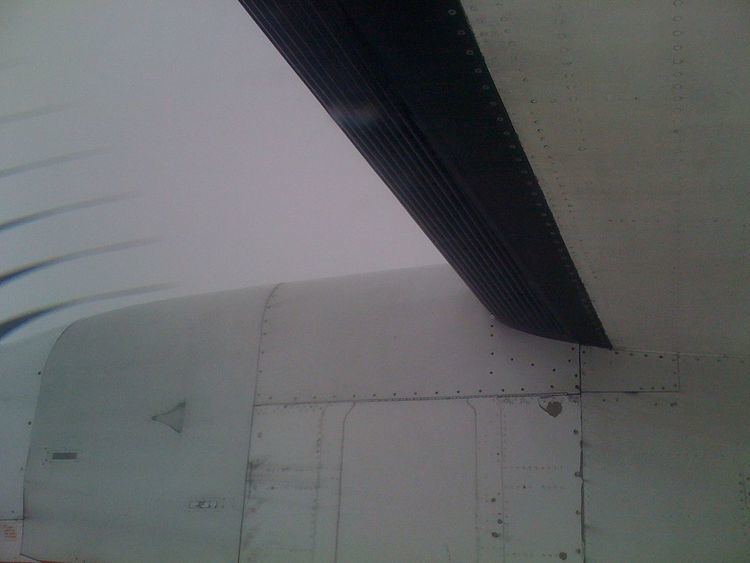 | ||
A deicing boot is a type of ice protection system installed on aircraft surfaces to permit a mechanical deicing in flight. Such boots are generally installed on the leading edges of wings and control surfaces (e.g. horizontal and vertical stabilizer) as these areas are most likely to accumulate ice and any contamination could severely affect the aircraft's performance.
Contents
Design
A deicing boot consists of a thick rubber membrane that is installed over the surface to be deiced. As atmospheric icing occurs and ice builds up, a pneumatic system inflates the boot with compressed air. This expansion in size cracks any ice that has accumulated, and this ice is blown away into the airflow. The boots are then deflated to return the wing or surface to its optimal shape.
Boots need to be replaced frequently (on the order of 2–3 years), and require proper care. Holes in the boot may create air leaks that will decrease the effectiveness of the boots. As such, boots must be carefully inspected before each flight and any holes or cuts must be patched.
History
Deicing boots were invented by the B.F. Goodrich Corporation in about 1929/30 in Akron, Ohio. The work was begun by retired Ph.D chemist, William C. Geer. In its quest to develop deicing boots, the company built a large indoor facility in Akron to replicate bad weather and icing on aircraft wings.
Alternatives
The use of deicing boots may enable an aircraft to be certified for flight into known icing conditions. However, they may not be sufficient to handle extremely severe icing, where ice can accumulate faster than the boots can shed it, or it accumulates on non-booted surfaces to the point where there is a dangerous loss of lift or control, or increase in weight.
Deicing boots are most commonly seen on medium-sized airliners and utility aircraft. Larger airliners and military jets tend to use heating systems within the wing, keeping it constantly warm and preventing ice from forming. Sources of heat include:
